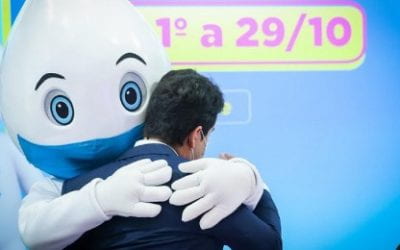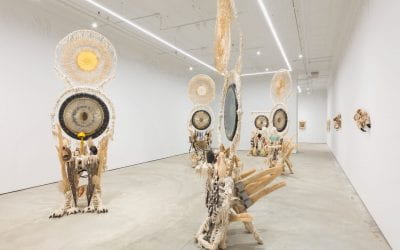A Letter from Buenos Aires
Dear June,
You ask me how we are doing here in Buenos Aires, living through a quarantine of more than a hundred days. The government quickly took the measures to impose it, advised by an excellent group of infectious disease experts, and people supported the decision, motivated by the need to prepare the precarious health system for the inevitable expansion of the virus by “flattening” the curve of contagion.

The reports say that today they are more than 75,000 cases in Argentina, of which 1,500 have been fatal, out of a population of 45 million inhabitants. An estimated 95% of the victims live in the metropolitan area of Buenos Aires (with 15 million people). The number of victims continues to be low compared to our neighbors Brazil and Chile, but we still haven’t reached the “peak”—so we continue to be shut up in our houses. There’s no certainty about when we will return to normal, if such a thing will even exist some day.
The only concrete (“real”) thing I can describe in this isolation is the space inside my apartment, which I share with my partner. “I come down” abruptly. I was studying the impact of scientific metaphors on architectural forms, submerged in the homogenous and empty Newtonian expression, in the dancing chaos of the quantum universe and in the micro-world of subatomic particles; I come back to our common space, in which there are directions, borders, individualities, things.
I hang on to these things: the forgotten toy of my granddaughter, whom I cannot hug; the watercolor given to me by an artist friend whom I can only see on a computer screen; my grandmother’s old armchair. Things take on a different meaning. Before the pandemic, my hours went by looking at the “blank page” of the computer screen, immersed in whatever I was researching. I might as well have been on a space ship. Now, whatever relationship with memories, affectionate emotions, daily life, is embodied in things: an unknown carpenter carved the scrollwork on my rustic table; old typesetters arranged, letter by letter, the print characters of the book I am reading; the brushwork on the painting my friend made with pigment that he ground himself. Each thing guards its very own history, and not just those things made to last: the last autumn flowers or the dough slowly rising become things themselves—happenings to which I had never paid too much attention before. We privileged residents of Buenos Aires have transformed into gardeners of potted plants and enthusiastic cooks of “whatever’s in the fridge,”sending tips to friends–gestures of love for whatsapp, how things turned out, what they looked liked, how we used to watch my nonno make the noodles every Sunday. To cultivate plants and to recycle leftovers take on a moral importance that goes beyond ecological alerts (“don’t waste food,” they told us as kids, while we sprouted some beans). Material, tangible reality, of things and beings who surround us estabish a continuity between the past and the future which—even if precarious—ties together the years and the generations.
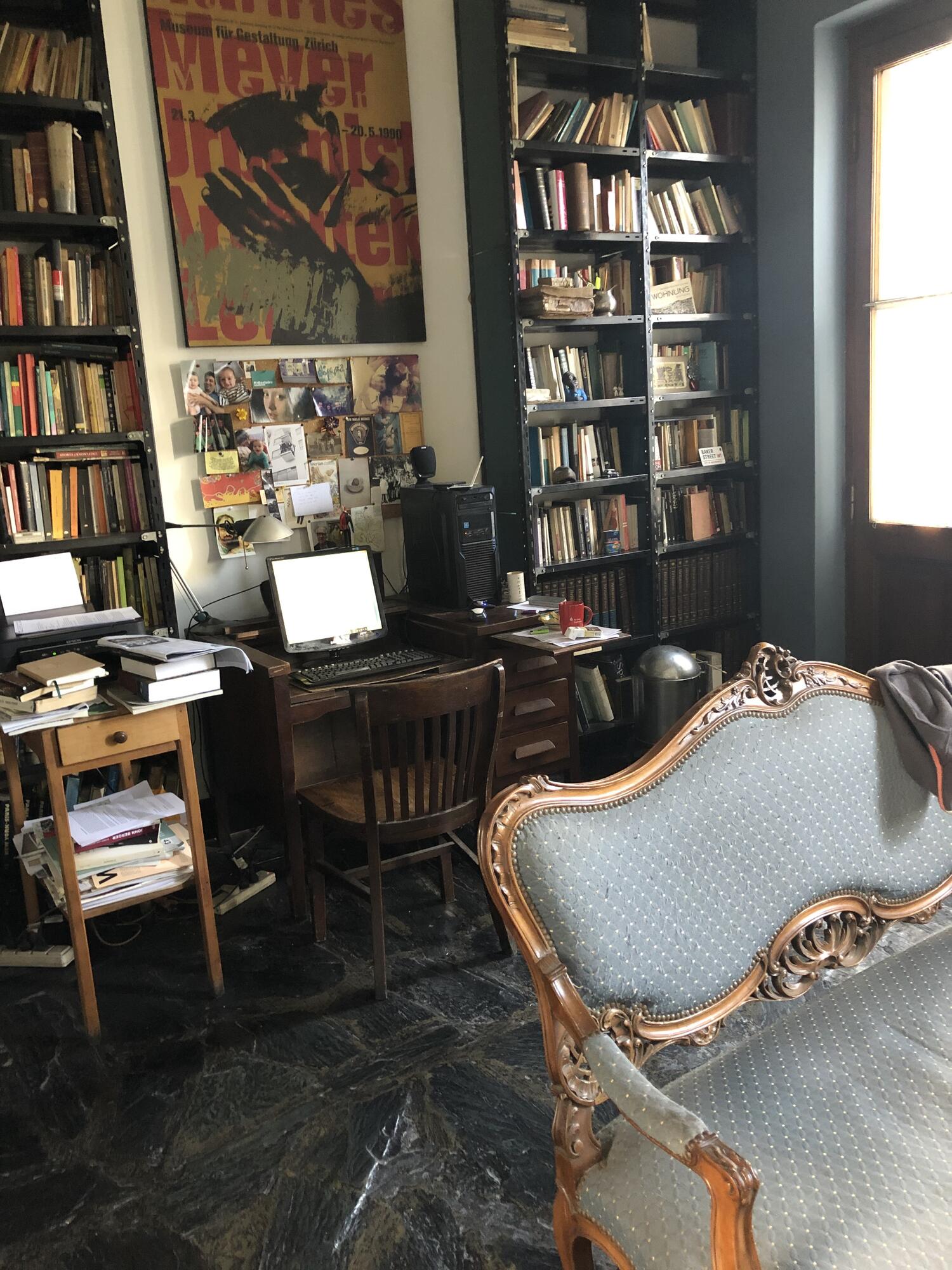

I began a graphic diary of the quarantine, taking photos of the small things that construct this domestic space; the new buds on the plants or the neighbor’s cat, who is our one and only visitor. With the hours in suspension, the sprouting of beans begins to have as much importance as the germination of words—or rather, in my own head, the relationship between the two assumes its proper place.
I invite you then, June, to my home. I want everyone to come over, because—the pride of everyone from Buenos Aires—the doors are always open. Since my childhood, the idea of “home” is a table where people gather around, talking different languages, eating, singing and drinking wine, whether they are friends, relatives or newcomers. I entertain with recipes from around the world that I have learned how to cook thanks to my very mixed extended family. That has not benefited trom the construction boom—which has created an advantage of which I am very appreciative: it kept the low building. I live on an upper floor of an old apartment house, constructed around 1900. Its layout is the type known as casa chorizo—a sausage house: a series of rooms looking over a patio or an open passageway. I have a balcony from which I can look out onto the street and greet my neighbors as they go out with their masks to buy groceries; a sunny corridor that looks northwards and a rooftop deck that we call a terraza. It’s a traditional flat roof like the ones found in the Mediterranean, covered with red tiles. The 19th-century ladies used to drink their mate tea here, looking over the river and observing the boats: the terrace then was a tie to the entire world. Today it is my “outside” where I can see green and watch the sky. With the paralysis of automobile traffic, our River Plate (we name the people of the region after the river) sky has never been more blue, even though we are in winter; the bees and butterflies visited the last flowers a few days ago already; early in the morning, we can still hear the birds sing.
These advantages would not have been enough to keep me sane if they had not mingled with the window of the internet: today more than ever, we depend on technological advances to maintain contact with others. I am a digital illiterate, and I am not particularly enthusiastic about leading a life on screen, but how coud I live without talking every day with my children, friends and, above all, my grandkids, using multiple platforms. And in the evening, thanks to the abundance of online streaming availability, do we not recuperate a lost world through old movies in which people could still hug each other?
Virtual communication not only helps with confinement; it is the key means for the open and cooperative sensibility promoted by young people, who have taken up the torch of criticism of the injust and dangerous socio-environmental order. But I cannot help but think that, at the same time as we promote austerity in energy consumption, recycling the garbage in compost, we rest on the advantages of the e-world, which inevitably implies the exploitation of the earth. Cellphone batteries, personal computers or elctric autmobies demand the exploitation of new minerals such as lithium of “white gold” concentrated in the triangle of the Southern Cone (Argentina, Bolivia y Chile have 80 percent of world reserves); and it is not unlikely that the South ends up being plundered to finance the “clean” circulation of the North.

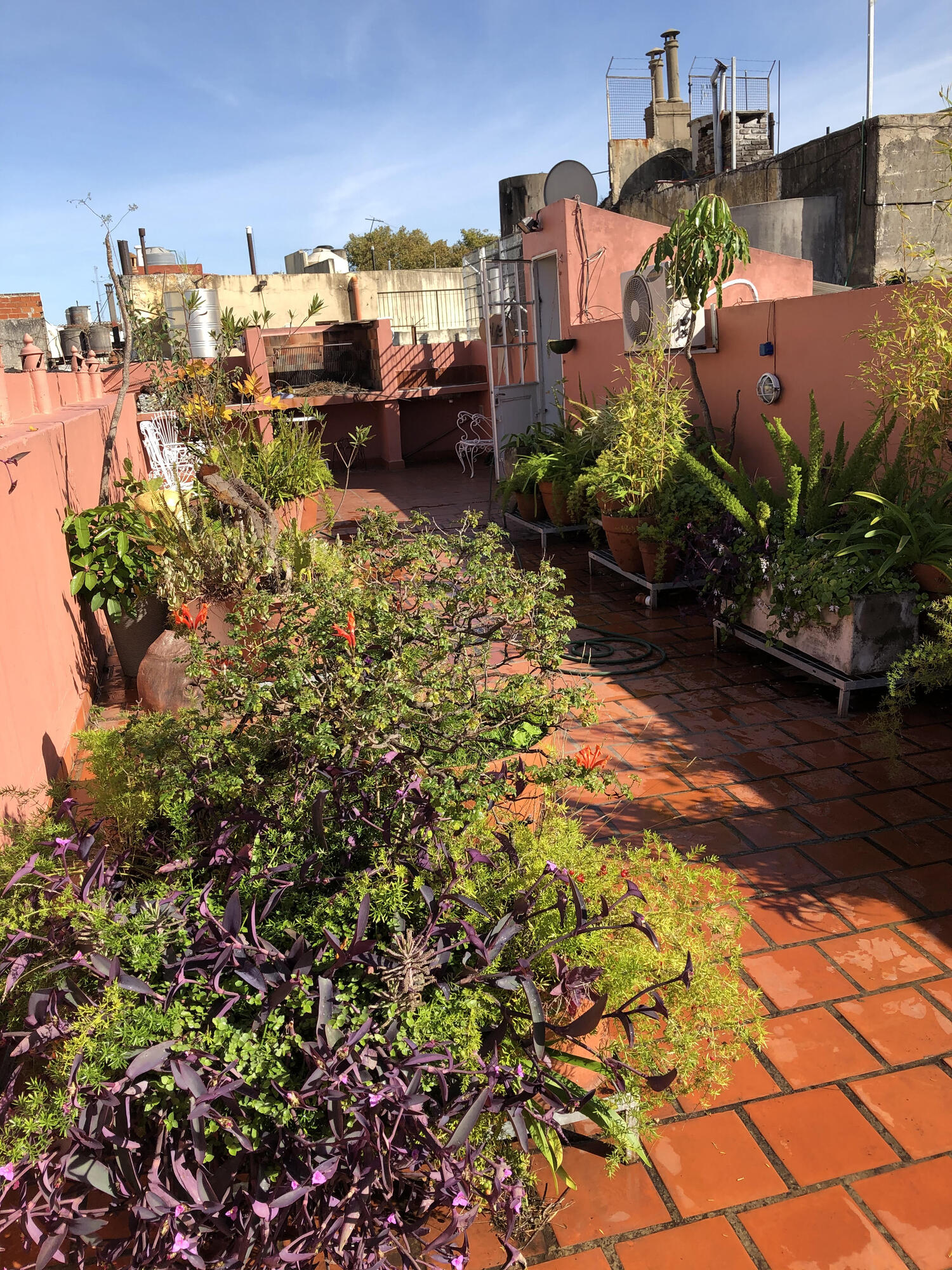
I don’t need to explain the gravity of the local situation in socio-economic terms. Argentina is on the brink of a “technical default;” small companies and businesses that were the pillars of daily activity have shut their doors forever; the greatest concentration of virus cases is in the marginalized neighborhoods, where thousands of people are crowded together; government measures aren’t enough to alleviate this situation of inequality that has been worsening for decades. In this context, it is not only difficult to maintain the quarantine; it is even more difficult to find the forms to confront this crisis. It’s most likely that we return to forms of production and consumption that, if indeed they could stimulate the economy in the short run, will put us in situations as serious as the ones we are experiencing today. Poor and indebted nations cannot confront the drastic changes in the productive plan that our current form of living demands, if the global system continues as it has up until now—without institutions and common agreements that recognize that a problem in Africa or South America do not affect only its inhabitants.
It appears that, with the fall of utopias, we have no imagination left to project another future. The visions tend to choose, as the Italian writer Umberto Eco would say, between apocalyptic and integrated, monopolizing the social media and the press. It’s difficult to find viable solutions for the transformation of a system that only promises humanity the record of being the record of being the only species that consciously accelerates its own extinction. Can we encounter sensible and realistic paths that do not rest on the myth of some Eden nor lead to the relentless exploitation of the earth? Is it possible to imagine another way of producing, of projecting?
It’s not strange to me that one of the most read articles in my field, the production of living space, is French philosopher Bruno Latour, who is determined to overcome the one-sided visions in our relation with the world. His optimism paradoxically rests in productive paralysis, which not only demonstrates the human role in the alterations in the biosphere, but also shows that we can put a brake on this frantic race. He proposes a questionaire based on one’s own experience—that which does not separate body and mind, imagination and physical events, space and time—with the hope of using “this time of imposed confinement to describe what we are tied to, what we are willing to let go of, the chains we are prepared to take up again and those which, because of our behavior, we are willing to break.” (Bruno Latour,“¿Qué medidas se pueden pensar para evitar el regreso del modelo precrisis?”). What activities do we want to take up again just like before and what do we want to discard? How do we imagine the transition? I take up Latour’s gauntlet and advocate his idea, that of exchanging experiences in a friendly and simple fashion.
For us architects, the challenge is the City, which was always our horizon. The Latin American world is one of cities (in Argentina, 92 percent of the population is urban, while the world average is 54 percent). If we abdicate from the city, as some green ideologues propose—in effect, the environmental impact of the city is great—we have to give up much more than just exploiting fossil fuel.
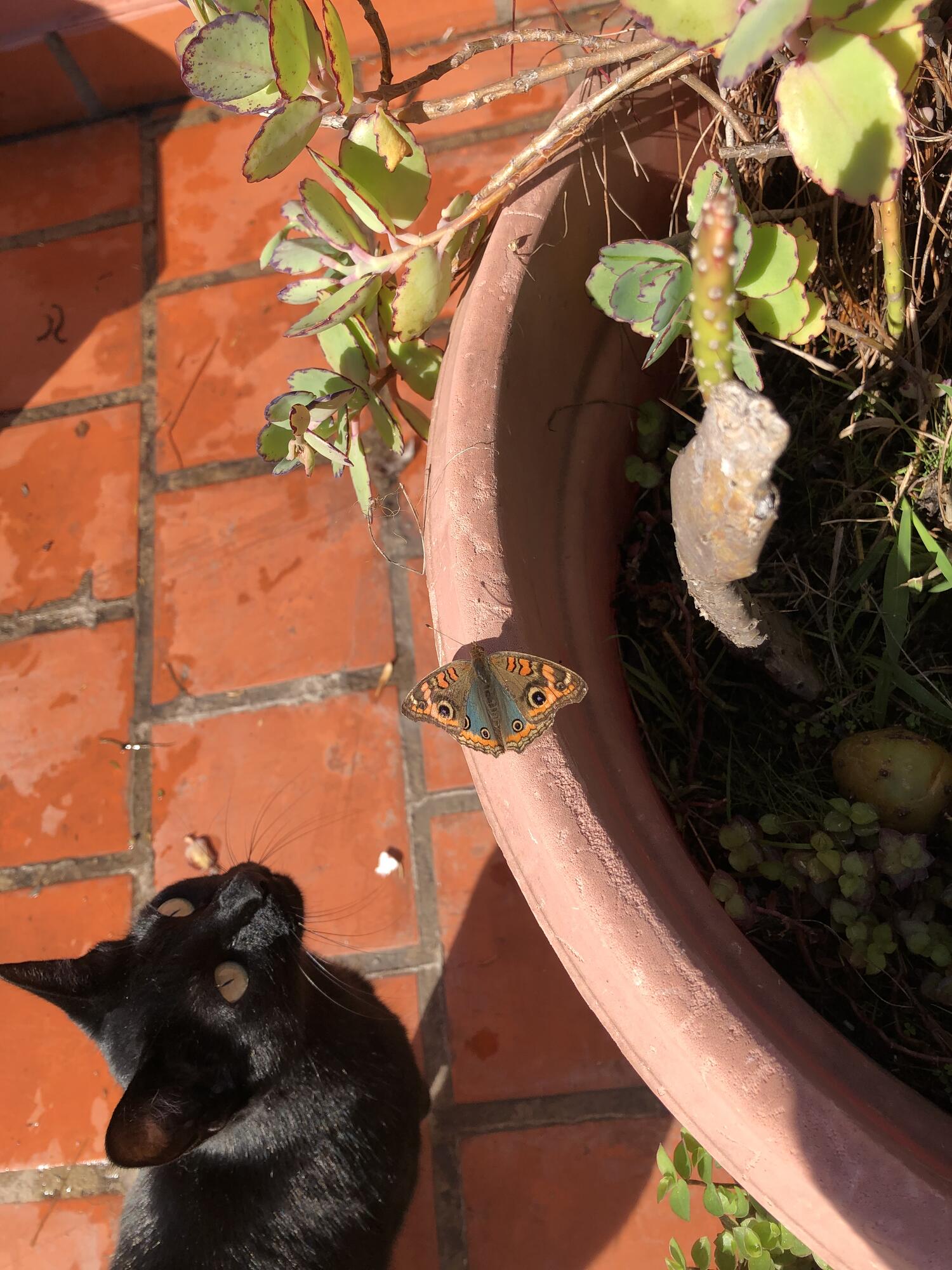

The city is much greater than its technical dimensions: it is a collective work of art; a space of collaborative political action; a relatively permanent stage made by human hands which, as Hannah Arendt said so well, rises up against “the sublime indifference of an untouched nature,” the inevitable destiny of entropic chaos. Above all, the City is a place of encounter with the Other (those who do not belong to out family, our tribe, our gens).
It is questionable that a metropolis (Metropoli) can properly be called a city: it has no limits; it dissembles into suburbs that aren’t quite “country.” The urban history of the 19th and 20th century witnessed of remediation that did not do away with the ghettos nor urban sprawl with its little houses on patches of green, with the malls that could only be reached by car, nor the groups of high-rise buildings with their air conditioning and amenities defending themselves against the informal cohort of poverty.
Nevertheless, the cities of the River Plate have not given up on the old aspiration of considering themselves open to the world, although in the last decades, social and cultural differences have grown abruptly, urban plans favor integration—that crude reality imposed on them. In places like Montevideo, the most democratic spatial experience of all Latin American cities, from the favela-like areas of Cerro or the housing developments of the South, residents enjoy the same coastline, the same beach, the same exceptional views as upper-class dwellings. With about 1.5 million residents, Montevideo maintains its demographic density —but it is a wakable city, open to the river and the horizon. It is the city I most love; but Buenos Aires, for better or worse, is my homeland. And in spite of the decadance of the mythic “Paris of South America,” every day more and more fragmentes, she shares this imaginary, this vision, with many cities of the River Plate. En Balvanera, before the quarantine, one could hear all the distinctive accents of South American Spanish—conjugated here alla italiana—; adding to it a bit of French patois, and the Guaraní that the German Jesuits transcribed. The architectural structure of my city condenses its aspirations for equality and mixing.
That’s what I’m lacking in the quarantine. I don’t miss the long and uncomfortable journeys in which it takes two hours to get from one place to another; I miss the moment in which, waiting for a train, a group of Venezuelan emigrants offered me a magnificent concert. More than a hundred musicians managed to get from Venezuela to Buenos Aires, to make their life playing music on the streets. They formed an orchestra, which also incorporated Syrian emigrants and played their music in a prestigious theatre in 2018.


I stopped to listen attently to the music because it provides the tone for every urban landscape in its dialects, murmurs, rhythms and melodies. This music is absent now, although we can listen to it on podcasts: its absence is marked by the inevitable background of urban noise, but also by the fact that the music of River Plate is initimately related to dance. I refer, as you might have guessed, to tango—although it also faces the same temporary destiny as other “embracing” dances such as the chamamé. In the milongas of Buenos Aires, those grand dance fests in which everyone is dancing tango, people do not dance with one’s own partner; you invite those who are light on their feet, whether they are ugly, pretty, known or unknown.
The tango—of disputed origin: African? creole?— involves a certain physical, sensual closeness, which few other dances possess. Is this a reflection of our “Latin” heritage, which presumably leads us to hug each other, kiss each other (men and women alike), touch each other? But don’t the Russians kiss each other three times, the last on the mouth? The tango reveals aspects of this physical relationship, which transcends races, nationalities, genders and sexual identities.
And suddenly, we cannot hug each other. What will we do (and it’s not only a question of economics) without the tourists who come to dance tango? This is the charm of our urban music: a fraternity—in the sense of liberté, égalité, fraternité—that we have judged many times as sentimental and now, with the dance an impossibility, we miss it. June, my friends, come drink mate tea with me—virtually—since we can no longer share the metal straw.
Graciela
Una carta desde Buenos Aires
Querida June,
Me preguntas cómo estamos aquí en Buenos Aires, transitando una cuarentena de más de 100 días. El gobierno tomó rápidamente las medidas para imponerla, asesorado por un excelente equipo de infectólogos, y la población apoyó la decisión motivada por la necesidad de preparar el precario sistema de salud para la inevitable expansión del virus, “aplanando” la curva de contagios.

Los informes indican hoy más de 75,000 personas infectadas en Argentina, de las que fallecieron 1,500, sobre una población de alrededor de 45 millones de habitantes. El 95% de las víctimas se encuentra en el área metropolitana de Buenos Aires (que concentra 15 millones). Los números de víctimas siguen siendo bajos en comparación con nuestros vecinos Brasil y Chile, pero todavía no hemos llegado al “pico”—por lo que continuamos encerrados. No existen certezas para afirmar cuándo podremos volver a la normalidad, si tal cosa existirá algún día.
Lo único concreto (“real”) que yo puedo describir en este encierro es el espacio de mi departamento, que comparto con mi compañero. “Aterricé” abruptamente. Estudiaba el impacto de las metáforas científicas en las formas arquitectónicas, sumergida en la homogénea y vacía extensión newtoniana, en el caos danzante del universo cuántico y en el micromundo de las partículas subatómicas; regresé al espacio común, en donde existen direcciones, bordes, individualidades, cosas.
Me aferré a ellas: el juguete olvidado de mi nieta, que no puedo abrazar; la acuarela regalada por un amigo a quien sólo veo en la pantalla del ordenador; el viejo sillón de mi abuela. Las cosas adquieren una nueva significación. Antes de la pandemia, mis horas transcurrían frente a la “página en blanco” de la pantalla, sumergida en el tema que trataba; bien podría haber escrito en una nave espacial. Ahora, cualquier relación con los recuerdos, los afectos, la vida cotidiana, se encarna en las cosas: un desconocido carpintero talló esas volutas en la madera rústica; viejos tipógrafos ordenaron, golpe a golpe, los caracteres de la impresión del libro que leo; las pinceladas de ese cuadro fueron hechas por mi amigo con pigmentos que el mismo molió. Cada cosa guarda una historia, y no solo las fabricadas para durar: las últimas flores de otoño o la masa de pan levándose resultan cosas—acontecimientos a los que antes no prestaba mucha atención. Los porteños privilegiados nos hemos convertido en jardineros de macetas y en entusiastas cocineros de “fondo de heladera”, enviando tips a los amigos –gestos de amor por whatsapp, como lo eran, en presencia, los tallarines amasados los domingos por mi nonno cocinero. Cultivar las plantas y reciclar restos retomó una importancia moral que excede los alertas ecológicos (“la comida no se tira”, nos decían de pequeños, mientras germinábamos un poroto). La realidad material, tangible, de cosas y seres de los que nos rodeamos, establecen una continuidad entre pasado y futuro que—si bien precaria_enlaza años y generaciones.
Inicié un diario gráfico de la cuarentena, tomando fotografías de las pequeñas cosas que construyen este espacio doméstico: los brotes nuevos de las plantas o la gata de la vecina que es nuestra única visita. Como el tiempo horario está en suspenso, la germinación del poroto comenzó a tener tanta importancia como la germinación de las palabras –o más bien, en mi cabeza, la relación entre ambas recuperó su lugar.


Te invito pues, June, a mi hogar. Quiero que todos entren, porque –orgullo porteño- estas puertas han estado siempre abiertas. Desde la infancia, mi idea de “hogar” es la de una mesa poblada de personajes que hablaban idiomas distintos, comiendo, cantando y tomando vino tinto, fueran parientes, amigos o recienvenidos. Los convido con las recetas de todas las partes del mundo que aprendí a hacer gracias a mi muy mezclada familia.
Vivo en el barrio de Balvanera, un viejo “barrio de tango” que no se benefició del auge constructivo—lo que se transformó en una ventaja que agradezco: mantuvo una edificación baja. Es un piso alto de una vieja casa de renta, construida hacia 1900. Su distribución responde a la tipología conocida como casa chorizo: una serie de habitaciones mirando a un patio o a un pasillo abierto. Tengo un balcón desde donde me asomo a la calle y saludo a mis vecinos que van a hacer compras con tapabocas; un pasillo soleado que mira al Norte; y una azotea, que aquí llamamos terraza. Se trata del techo plano tradicional en el Mediterráneo, tapizado de baldosas rojas. En ella las damas del siglo XIX tomaban mate, observaban el río y avistaban los barcos: la terraza era entonces un vínculo con el vasto mundo. Hoy es el “afuera” en donde puedo ver verde y avistar el cielo. Con la parálisis del tránsito automotor, nuestro cielo rioplatense nunca fue más azul, aunque estamos en invierno; las abejas y las mariposas visitaron las últimas flores unos días atrás; temprano a la mañana aún se escucha el canto de los pájaros.
Estas ventajas no hubieran bastado para mantenerme cuerda si no se hubieran entrecruzado con la ventana de internet: hoy como nunca dependemos de los avances tecnológicos para estar en contacto con otras personas. Soy analfabeta digital, y no me entusiasma la vida—en-pantalla, pero ¿qué sería de mí si no hablara diariamente con hijos, amigos y, sobre todo, con mis nietos, usando las múltiples plataformas? A la nochecita, gracias a la multiplicación de la oferta on-line, ¿no recuperamos el mundo perdido a través de viejos films en los que todavía la gente se abrazaba?
La comunicación virtual no sólo ayuda en el encierro; es vehículo clave en la formación de la sensibilidad abierta y cooperativa impulsada por los más jóvenes, que retomaron la antorcha de la crítica a órdenes socioambientales injustos y peligrosos. Pero no puedo dejar de pensar que, al mismo tiempo propulsamos la austeridad en el gasto energético, reciclando la basura en compost, descansamos en las ventajas del e-world, que implica inevitablemente la explotación terrestre. Las baterías de los celulares, los ordenadores personales o los autos eléctricos necesitan de la explotación de nuevos minerales como el litio, el “oro blanco” concentrado en el triángulo del cono sur (Argentina, Bolivia y Chile poseen el 80% de las reservas mundiales); no es improbable que el Sur termine saqueado para financiar la “limpia” circulación del Norte.


No necesito explicar la gravedad de la situación local en términos socioeconómicos. Argentina está al borde del “default técnico”; las pequeñas empresas y negocios que cimentaban la actividad cotidiana cierran sus puertas de manera definitiva; la mayor expansión del virus se halla en los barrios precarios, en donde viven hacinadas miles de personas, a veces sin siquiera agua corriente; no alcanzan los esfuerzos gubernamentales para paliar una situación de desigualdad que viene acentuándose desde hace décadas. En este marco, no sólo es difícil mantener la cuarentena; aún más difícil será encontrar las formas de encarar esta crisis. Lo más probable es que regresemos a formas de producción y consumo que, si bien podrían incentivar la economía en el corto plazo, nos expondrán a situaciones tan graves como las que estamos experimentando. Los países pobres y endeudados no pueden afrontar los cambios drásticos en el plano productivo que requiere nuestra actual forma de habitar, si el sistema global continúa como hasta hoy—sin instituciones y acuerdos comunes que reconozcan que un problema en África o Sudamérica no afecta sólo a sus habitantes.
Pareciera que, caídas las utopías, ya no nos queda imaginación para proyectar otro futuro. Las visiones suelen decantarse, como diría el escritor italiano Umberto Eco, entre apocalípticas e integradas, monopolizando redes y media. Resulta difícil hallar propuestas viables para la transformación de un sistema que sólo promete a la humanidad el record de ser la única especie que acelera conscientemente su propia extinción. ¿Es posible encontrar caminos sensatos y realistas, que no descansen en el mito edénico, ni se resignen a la descarnada explotación terrestre? ¿Es posible imaginar otra manera de producir, de proyectar?
No extraña que el autor de uno de los artículos de mayor circulación en mi campo de estudios, la producción del habitar, sea filósofo francés Bruno Latour, empeñado en superar las visiones biunívocas en nuestra relación con el mundo. Su optimismo descansa paradójicamente en la parálisis productiva, que no sólo demostró el papel humano en las alteraciones de la biósfera, sino también que podíamos frenar esta enloquecida carrera. Propone un cuestionario que sugiere contestar desde la propia experiencia—aquella que no separa cuerpo y mente, imaginación y hechos físicos, espacio y tiempo—con la esperanza de “utilizar este tiempo de confinamiento impuesto para describir aquello a lo que estamos ligados, aquello de lo que estamos listos para liberarnos, las cadenas que estamos preparados para reconstituir y aquellas que, por nuestro comportamiento, estamos decididos a interrumpir” (Bruno Latour,“¿Qué medidas se pueden pensar para evitar el regreso del modelo precrisis?”)
¿Qué actividades quisiéramos retomar como antes, y cuales desearíamos que no se retomaran? ¿Cómo imaginamos la transición?
Recojo el guante de Latour y lo vinculo con tu idea, la de que amistosa y sencillamente intercambiáramos experiencias (refiero a Bruno Latour,“¿Qué medidas se pueden pensar para evitar el regreso del modelo precrisis?”.)


Para los arquitectas/os, el desafío es la Ciudad, que siempre fue nuestro horizonte. El mundo latinoamericano es un mundo de ciudades (en Argentina, el 92% de la población es urbana, mientras el promedio mundial es del 54%). Si hemos de abdicar de ella, como plantean algunas ideologías verdes –en efecto, el impacto medioambiental de la ciudad es mayúsculo-, tenemos que saber que renunciamos a mucho más que dejar de explotar combustibles fósiles.
La ciudad excede con mucho las resoluciones técnicas: es obra de arte colectiva; espacio de acción política conjunta; escena de relativa permanencia hecha por manos humanas que, como bien decía Hannah Arendt, se levanta contra “la sublime indiferencia de la naturaleza”, el destino inexorable del caos entrópico. Sobre todo, la Ciudad es el lugar de encuentro con el Otro (el que no pertenece a nuestra familia, a nuestra tribu, a nuestra gens).
Es dudoso que la Metrópoli pueda ser llamada, propiamente, ciudad: carece de límites, se desarma en suburbios que difícilmente podemos reconocer como “campo”. La historia urbanística de los siglos XIX y XX vio emerger proyectos de remediación que no evitaron ni los guetos, ni la expansión en vecindarios de casitas dispersas en el verde, con un mall sólo accesible en automóvil; ni los núcleos de altas torres con aire acondicionado y amenities defendiéndose contra la amenaza de la informal cohorte de la pobreza.
Sin embargo, las ciudades rioplatenses no han abdicado de la vieja aspiración de considerarse abiertas al mundo: aunque en las últimas décadas crecieron bruscamente las diferencias sociales y culturales, los planes urbanos favorecieron siempre la integración –bien que la cruda realidad se les impuso. En lugares como Montevideo, la experiencia espacial más democrática entre todas las ciudades latinoamericanas, hasta las áreas faveladas del Cerro o los conjuntos sociales del Sur disfrutan de la misma costanera, la misma playa, la misma excepcional vista que las viviendas de altos recursos. Con alrededor de 1,5 millones de habitantes, Montevideo mantiene la densidad demográfica—nada ajena a la densidad cultural—, pero es recorrible a pie, abierta al río y al horizonte. Es mi ciudad amada; pero Buenos Aires, para bien o mal, es mi patria. Y a pesar de la decadencia de la mítica “París de Sudamérica”, cada vez más fragmentada, ella comparte este imaginario con muchas ciudades del Plata. En Balvanera, aún podía escuchar antes de la cuarentena todos los acentos del castellano sudamericano—declinado aquí alla italiana—; sumarle el francés patois, y el guaraní que los jesuitas alemanes transcribieron. La estructura arquitectónica de mi ciudad condensó las aspiraciones de igualdad y mezcla.
Es ella la que me falta en la cuarentena. No añoro los largos e incómodos viajes que llevaban más de dos horas si iba de una punta a otra; añoro el momento en que, esperando en el andén subterráneo, un grupo de emigrantes venezolanos me ofrecía un magnífico concierto. Más de 100 músicos se las arreglaron para llegar a Buenos Aires, hacer una vida en “la calle”, y formar una orquesta que acogió a emigrados sirios, presentada en un prestigioso teatro en 2018.


Me detuve en la música porque ella da el tono de cada paisaje urbano en sus dialectos, murmullos, ritmos y melodías. Esta música está ausente, aunque podamos escucharla en podcast: no sólo porque carece de los impredecibles insertos del ruido urbano, sino porque la música rioplatense está íntimamente relacionada con la danza. Me refiero, como habrán adivinado, al tango –aunque corren igual suerte otros bailes “de abrazo”, como el chamamé. En las milongas porteñas, no se baila con la pareja; se invita a quien posee destreza, sea feo/a, lindo/a; conocido o desconocido.
El tango –de discutido origen: ¿africano? ¿criollo?- implica una cercanía física, sensual, que pocos bailes poseen. ¿Se trata de nuestra herencia “latina”, la que presuntamente nos lleva a abrazarnos, besarnos (inter-género), tocarnos? Pero, ¿acaso los rusos no se besan tres veces, la última en la boca? El tango revela aspectos de esta relación física, que trasciende razas, nacionalidades, géneros y sexos.
Y súbitamente, ya no podemos abrazarnos. ¿Qué haremos (y no se trata sólo de una cuestión económica), sin los turistas que venían a bailar tango? Esta es la gracia de nuestra música urbana: una fraternidad que hemos juzgado muchas veces como sentimental, y que ahora, que sabemos imposible, añoramos. June, mis amigos: tómense conmigo un mate virtual, ya que no puedo compartir la bombilla.
Graciela
Graciela Silvestri, an architect with a doctorate in history from the University of Buenos Aires, was the 2005-06 DeFortabat Visiting Scholar and then the 2014 Robert F. Kennedy Visiting Professor at the David Rockefeller Center for Latin American Studies, Harvard University. She is the author of El paisaje como cifra de armonía (with Fernando Aliata), El color del río, El lugar común and Paraná Ra‘Angá: Un viaje filosófico (with Martín Prieto). A researcher at the Consejo Nacional de Investigaciones Científicas y Técnicas, Argentina, she was a full professor of the Theory of Architecture at the Universidad de La Plata.
Graciela Silvestri, Arquitecta y Doctora en Historia (Universidad de Buenos Aires), fue 2005-06 DeFortabat Visiting Scholar y 2014 Robert F. Kennedy Visiting Professor en el David Rockefeller Center for Latin American Studies, Harvard University. Ella es autora de El paisaje como cifra de armonía (con Fernando Aliata), El color del río, El lugar común y Paraná Ra‘Angá: Un viaje filosófico (con Martín Prieto). Investigadora del Consejo Nacional de Investigaciones Científicas y Técnicas, Argentina, ella fue Profesora titular de Teoría de la Arquitectura en la Universidad de La Plata.
Related Articles
Brazil’s Vaccinated Democracy
In March 2021, former Brazilian president Luiz Inácio Lula da Silva, a current presidential candidate, posed a pointed question in a speech lambasting President Jair Bolsonaro’s Covid-19 response. “Where is our beloved Zé Gotinha?” Zé Gotinha is not a respected public health expert or crisis manager
Broken Land: Climate Change and Migration in Guatemala
Broken LandClimate Change and Migration in Guatemala Santos Istazuy Pérez (right) sits in meditation during a group hike and workshop at a lush farm along with fellow Guatemalans and like-minded people from around the world including Germany and Uruguay. Photo by...
The Gift of Art
My dear friend, Colombian pioneer performance artist, Maria Evelia Marmolejo, (Cali, Colombia, 1958) whom I met during the research for the exhibition Radical Women: Latin…

